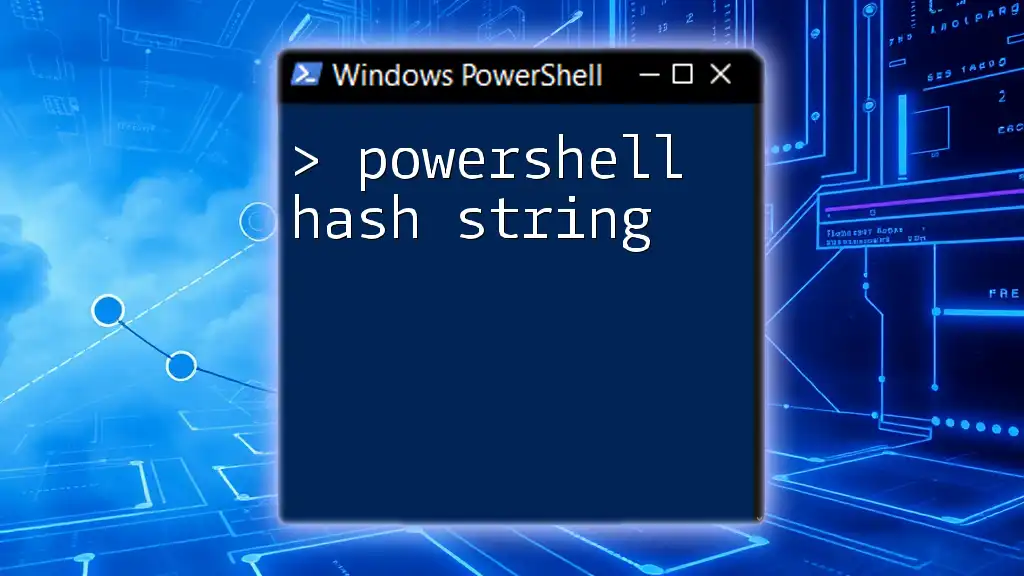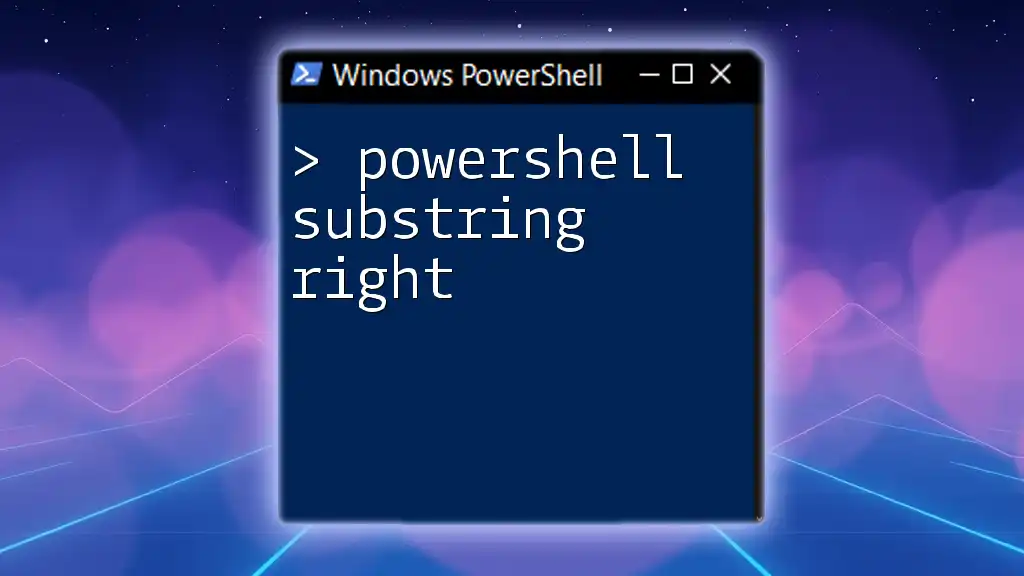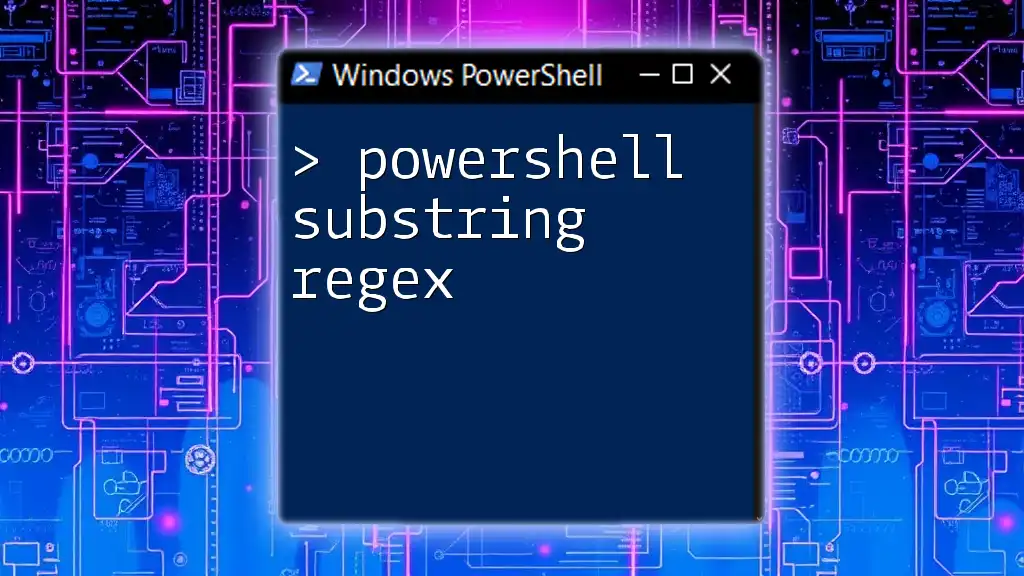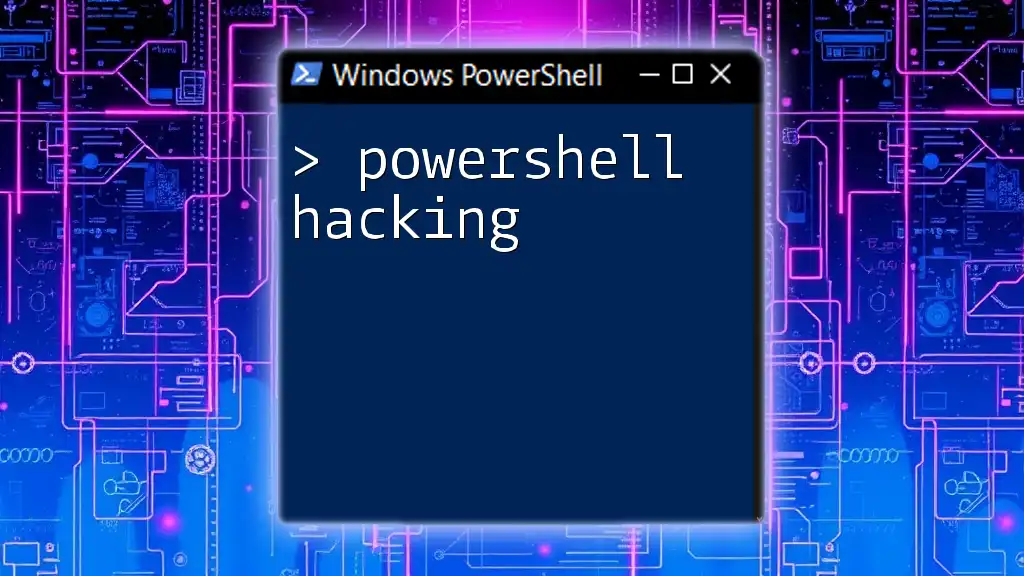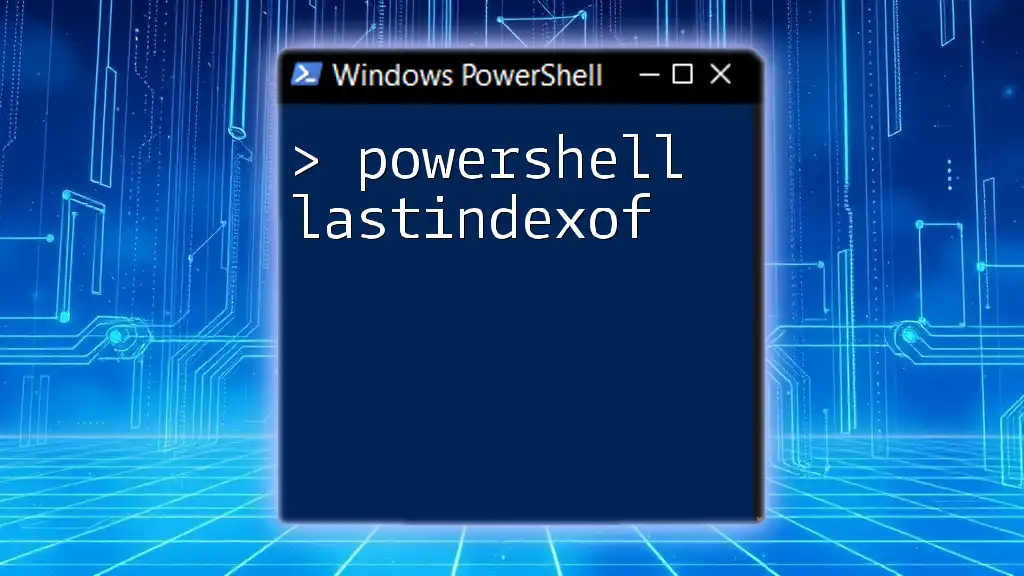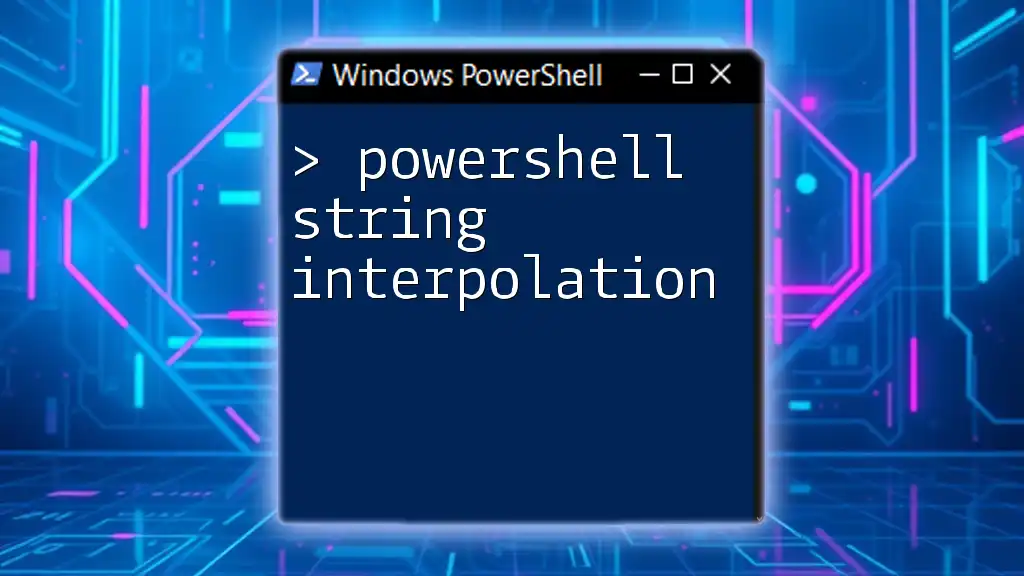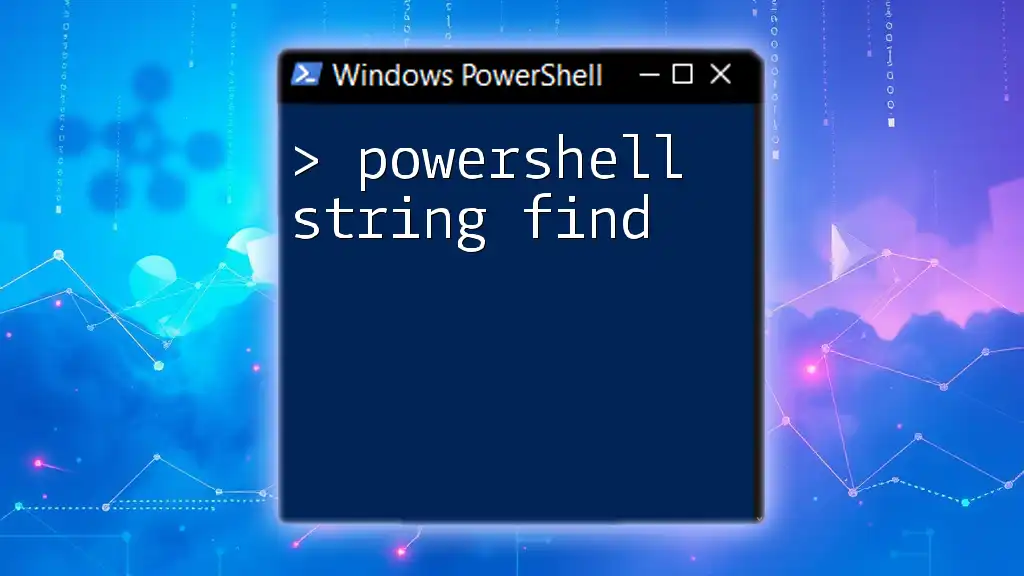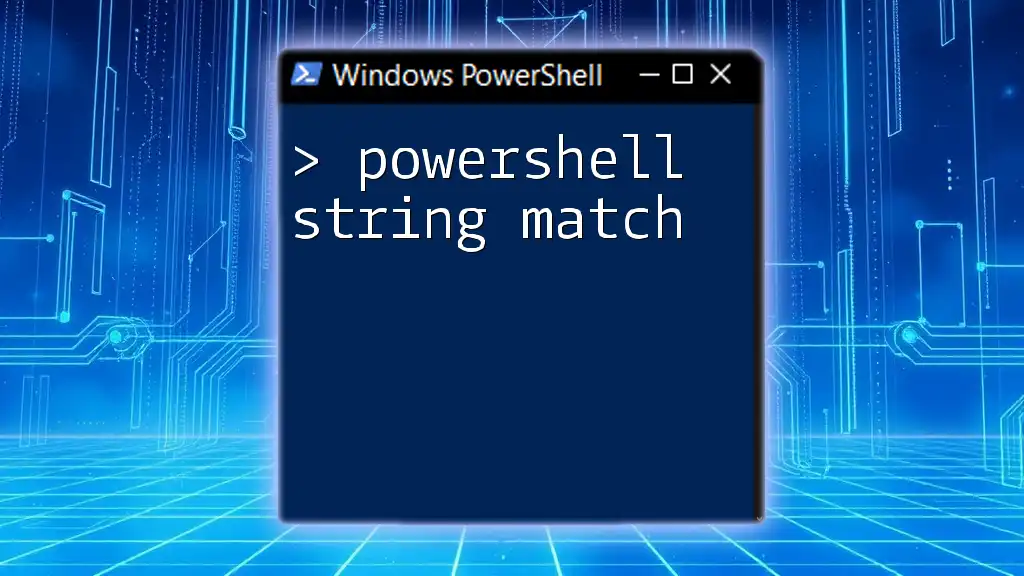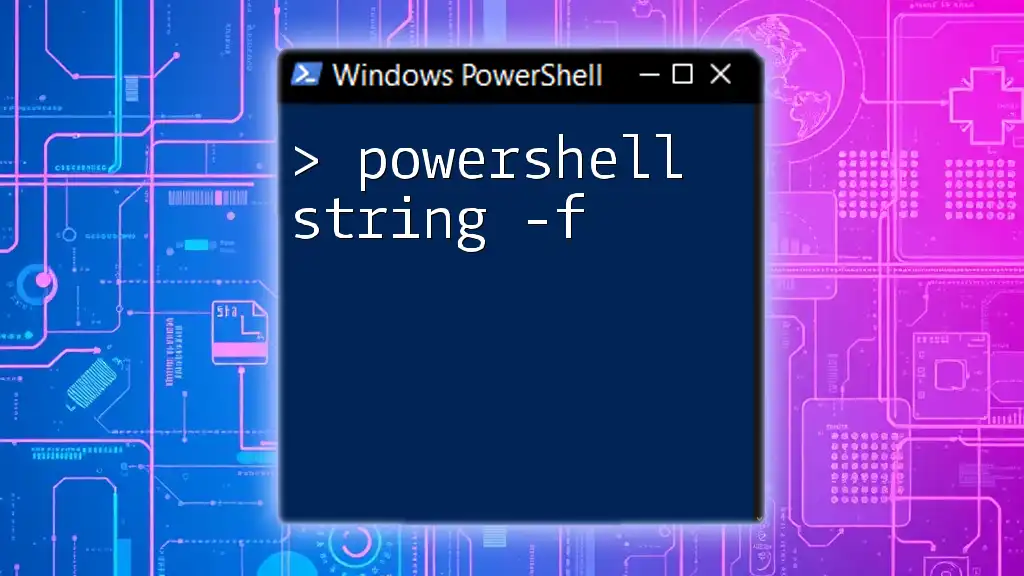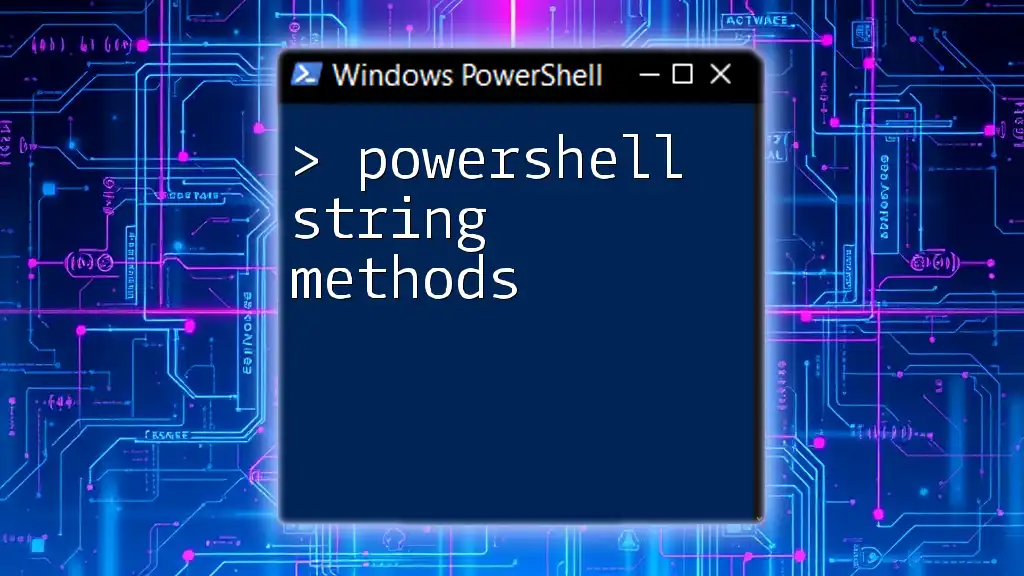In PowerShell, you can hash a string using the `Get-FileHash` cmdlet along with a conversion of the string to a byte array; here’s a simple example:
$string = "Hello, World!"
$hash = [System.Text.Encoding]::UTF8.GetBytes($string) | Get-FileHash -Algorithm SHA256
$hash.Hash
Understanding Hash Functions
How Hash Functions Work
A hash function is a mathematical algorithm that transforms input data (or a "message") into a fixed-size string of characters, typically appearing random. The output is known as the hash value, hash code, or simply a "hash." Hash functions are fundamental in ensuring the integrity and authenticity of data, playing a critical role in various fields such as cryptography, data structures, and information retrieval.
Some key characteristics of a good hash function include:
- Deterministic: The same input always produces the same output.
- Fast Computation: It’s quick to produce a hash value for any input.
- Pre-image Resistance: It should be infeasible to generate the original input from its hash value.
- Small Changes in Input Change the Output: A slight change in input should produce such a drastic change in output that the new hash appears uncorrelated with the old hash.
Common Use Cases for Hash Strings
Hash strings have numerous practical applications, including:
- Data Validation: Ensuring that files have not been altered or corrupted during transfer.
- Password Storage: Storing hash values of passwords instead of plain text to enhance security.
- Digital Signatures: Verifying the authenticity of digital communications.

PowerShell and Hashing
PowerShell Cmdlets for Hashing
PowerShell provides built-in cmdlets to handle hashing tasks efficiently. Notable amongst these is the `Get-FileHash` cmdlet, which computes the hash value for a file using specified hash algorithms. Additionally, you can leverage the capabilities of the .NET Framework through PowerShell for more complex hashing operations.
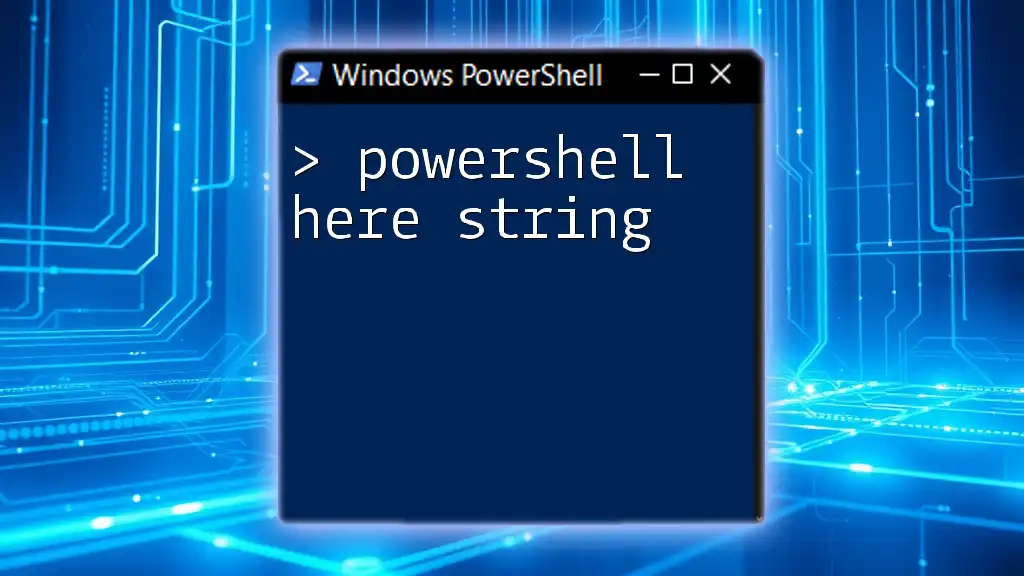
Creating Hash Strings with PowerShell
Using `Get-FileHash` Cmdlet
The `Get-FileHash` cmdlet is straightforward to use. The basic syntax is as follows:
Get-FileHash -Path <String> [-Algorithm <String>]
In this command, `-Path` specifies the file’s location, while `-Algorithm` specifies which hashing algorithm to use (e.g., SHA256, MD5).
Example Usage of `Get-FileHash`
Consider the following example, which computes the SHA256 hash of a file located at `C:\path\to\your\file.txt`:
Get-FileHash -Path "C:\path\to\your\file.txt" -Algorithm SHA256
When executed, this command returns an output containing the file's hash value among other details. Here's a brief explanation of the output:
- Algorithm: Specifies the hashing scheme used (SHA256, in this case).
- Hash: The actual computed hash value which represents the file's content.
- Path: The path to the file.
Hashing Strings Directly
You can also hash strings directly in PowerShell using .NET methods. This approach is more flexible for those who wish to hash input other than files.
Example of Hashing a String Directly
Here’s a sample code snippet that demonstrates how to hash a string using SHA256:
$string = "Hello, World!"
$bytes = [System.Text.Encoding]::UTF8.GetBytes($string)
$hash = [System.Security.Cryptography.SHA256]::Create()
$hashBytes = $hash.ComputeHash($bytes)
[BitConverter]::ToString($hashBytes) -replace '-', ''
Explanation:
- The first line assigns the string "Hello, World!" to the variable `$string`.
- Next, we convert this string into a byte array using UTF8 encoding.
- We create a new instance of the SHA256 hashing algorithm through .NET.
- `ComputeHash` calculates the hash bytes for the input byte array.
- Finally, we convert the hash byte array into a string, formatting it as a hexadecimal string.

Validating Hash Values
Why Validate Hash Values?
Validating hash values is crucial for ensuring data integrity. It can verify whether a file has been tampered with or if data remains intact during storage or transmission.
Example of Hash Validation
The following PowerShell script checks if a file's computed hash matches an expected hash value:
$fileHash = Get-FileHash -Path "C:\path\to\your\file.txt" -Algorithm SHA256
$expectedHash = "A6F6E4A6B007FBE163B2B1E6E1109C6C10F5B699A9886FBA9AC694B5B36A6F17"
if ($fileHash.Hash -eq $expectedHash) {
"Hash matches. File is intact."
}
else {
"Hash does not match. File may be altered."
}
Explanation:
- The script computes the hash of the specified file and compares it to a predefined expected hash.
- If they match, it confirms that the file is intact; otherwise, it indicates potential tampering.

Practical Applications of Hashing in PowerShell
Automating Audits and Integrity Checks
PowerShell can be particularly useful for automating audits and ensuring file integrity across systems. You might create scripts that run periodically to check and log the hash values of critical files.
Example Script for File Integrity Check
The following script demonstrates how to check the integrity of multiple files:
$filesToCheck = "C:\path\to\your\file1.txt", "C:\path\to\your\file2.txt"
$expectedHashes = @("A6F6E4A6B007FBE163B2B1E6E1109C6C10F5B699A9886FBA9AC694B5B36A6F17",
"D1C2E3F4B5E6F7A8B9C0D1E2F3A4B5C6D7E8F9A0")
for ($i = 0; $i -lt $filesToCheck.Length; $i++) {
$currentHash = (Get-FileHash -Path $filesToCheck[$i] -Algorithm SHA256).Hash
if ($currentHash -eq $expectedHashes[$i]) {
"$($filesToCheck[$i]) is intact."
}
else {
"$($filesToCheck[$i]) has been altered."
}
}
Explanation:
- This script iterates through an array of file paths, computing each file's hash and comparing it to the corresponding expected hash.
- If the hashes match, it confirms integrity; if not, it raises an alert indicating the file may have been altered.

Best Practices for Using Hash Strings
Choose the Right Algorithm
Selecting the right hashing algorithm is vital depending on your needs. For critical applications, prefer SHA-256 or higher due to their improved security over older algorithms like MD5 or SHA-1, which are more susceptible to collision attacks.
Security Considerations
When handling hash values, keep in mind:
- Never Store Plain Text: Always keep hash values secure to avoid exposure to compromise.
- Salt Your Hashes: When using hashes for passwords, employ a unique salt for each user to protect against rainbow table attacks.
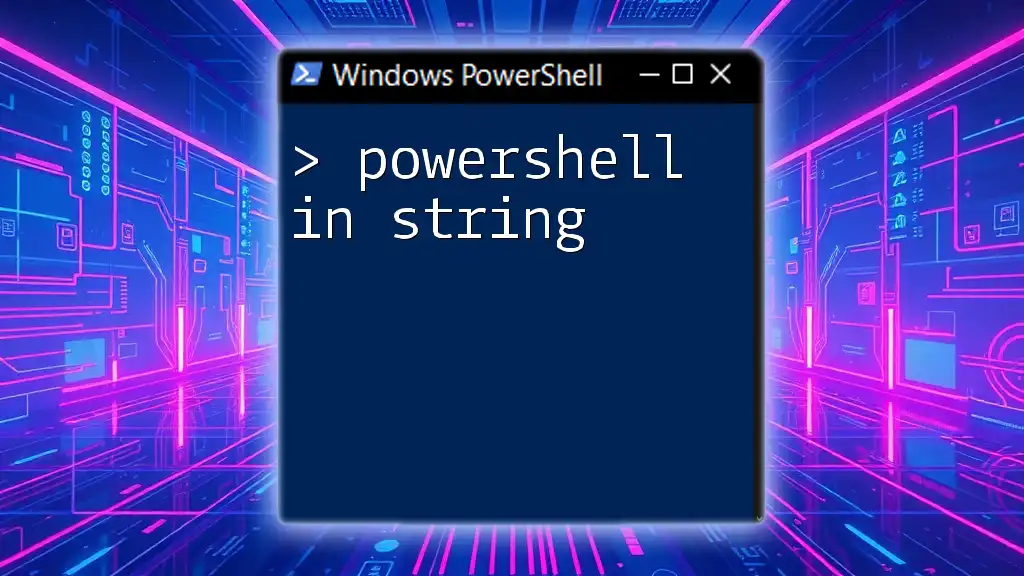
Troubleshooting Common Issues
Common Errors When Hashing
Errors can arise from incorrect file paths, unsupported hashing algorithms, or syntax mistakes. Reading the error messages carefully can often guide you to resolve these issues rapidly.
Performance Tips
For large files or countless records, optimizing your hash calculations can save considerable time. Utilize parallel processing techniques or leverage efficient reading methods to enhance performance.
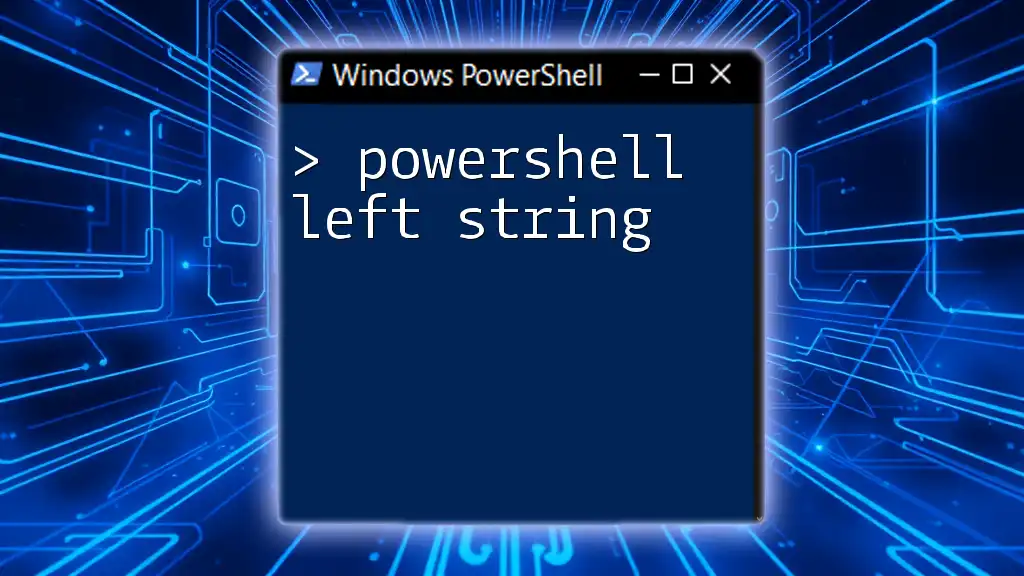
Conclusion
In conclusion, understanding how to use the PowerShell hash string capabilities is essential for secure and effective file management and verification. By mastering the use of hash functions in PowerShell, you equip yourself with powerful tools for ensuring data integrity and maintaining security in your workflows.
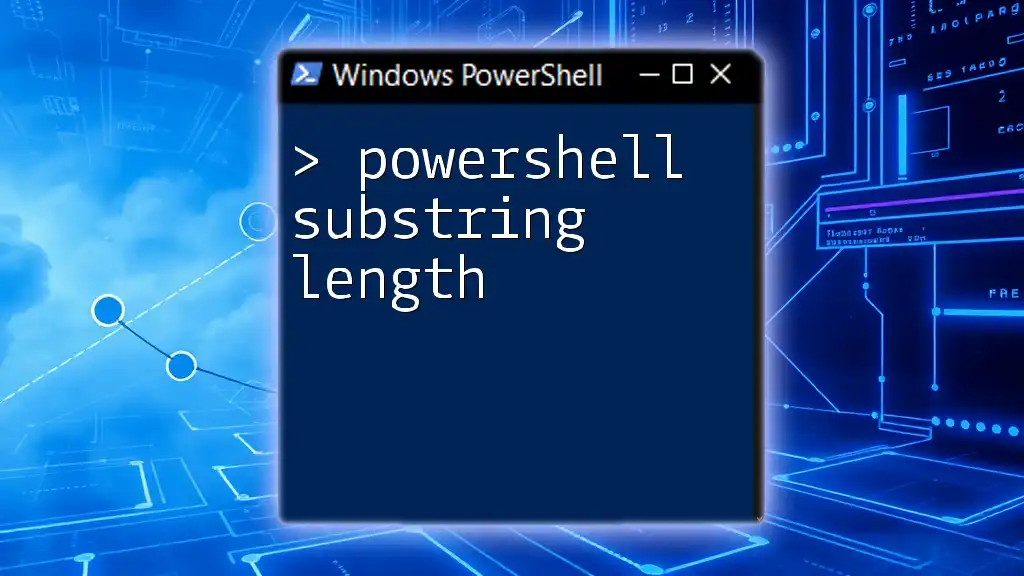
Additional Resources
For further learning on this topic, consider exploring the official Microsoft PowerShell documentation related to hash functions and PowerShell scripting. You might also discover valuable insights from popular books and online courses that specialize in PowerShell and security best practices.

